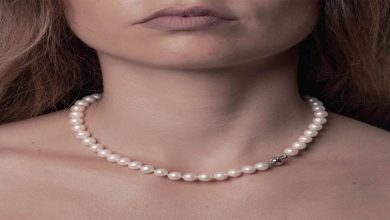
In the world of ice skating, there are two types of rinks enthusiasts can choose from—synthetic ice rinks and traditional ones. But while both offer the exciting sensory experience of gliding, neither can provide a one-size-fits-all solution. When choosing between the two, it’s crucial to consider multiple factors, including cost, maintenance, and preferred user experience.
This article provides an easily digestible comparison to help you understand the key differences between synthetic and traditional ice rinks.
Synthetic Ice Rinks
Manufacturers use a variety of materials to create synthetic ice rinks, including plastic, rubber, and polymer. While they come in different forms, the most popular type features interlocking panels that fit together to form a skating surface. These artificial rinks boast versatility as a primary advantage, suitable for year-round use, regardless of weather conditions. They are also applicable for indoor and outdoor use.
But despite being designed to mimic the gliding feel of natural ice, skaters often report a higher resistance level than natural ice. This added friction can make gliding more difficult and disrupt a skater’s flow. Fortunately, quality providers like Kwik Rink Synthetic Ice have developed the technology to replicate up to 90% of natural ice’s glide. With that said, synthetic ice rinks offer several distinct advantages:
- Cost-effectiveness: Unlike traditional ice rinks, synthetic ice doesn’t require temperature regulation or a resurfacing machine. And once installed, they don’t consume water or energy, making them an eco-friendlier choice.
- Installation: Unlike the conventional process for traditional ice rinks, which involves cooling a large area, adding layers of water, and freezing it into a smooth surface, installing synthetic rinks takes significantly less time. Depending on their size, most artificial rinks can be set up within a day.
- Versatility: Moreover, you can set up synthetic ice rinks virtually anywhere, making them ideal for private residences, commercial establishments, and community centers.
- Durability: Synthetic ice rinks can withstand heavy use, which makes them a good choice for public skating and hockey rinks. With proper maintenance (regular vacuuming and polishing), synthetic rinks can last well over 10 years.
- Safety: Natural ice rinks are more prone to surface imperfections that can cause skaters to fall. Conversely, artificial rinks offer a more consistent skating surface. Synthetic ice is also more forgiving to falls owing to its shock-absorbing underlayer, making it ideal for beginners or those learning new skills.
Despite its benefits and widespread use in training facilities and recreational rinks, it’s worth noting that synthetic ice is currently not accepted for professional ice hockey or figure skating competitions. Moreover, not all synthetic ice providers hold the same standards. This is a critical consideration, as low-quality synthetic ice can disrupt a skater’s flow and make gliding difficult, ultimately leading to an undesirable skating experience.
Traditional Ice Rinks
While synthetic ice offers many compelling advantages, it can’t wholly replicate the authentic skating experience of traditional ice rinks. Skating on natural ice involves a thin layer of water generated from the heat of friction, which creates a smooth gliding effect. This effect is less pronounced on synthetic ice, resulting in more resistance, dull skates, and a noticeably different skating experience.
However, maintaining a traditional ice rink can be expensive and energy intensive. It requires regular resurfacing with a Zamboni to keep the ice smooth and refrigeration systems to preserve the ice. Yet despite the maintenance challenges and costs, many skating purists and professional athletes prefer traditional ice rinks due to their unparalleled authentic feel and performance.
Which Type Of Ice Rink Is Right For You?
Choosing between synthetic and traditional ice rinks primarily depends on your specific needs, budget, and purpose. While traditional ice rinks offer superior, competition-grade skating experiences, they come with high installation and maintenance costs. In contrast, synthetic ice rinks, while not entirely replicating the feel of natural ice, are more versatile, cost-effective, and eco-friendly, making them a viable alternative for endurance training and recreational purposes.

Despite these differences, both synthetic and traditional ice rinks can foster the love for ice sports (and athletic winter fashion), be it hockey, figure skating, or leisurely ice skating. Synthetic ice is an excellent tool for practice and training due to its slightly higher resistance, which can build strength and stamina. On the other hand, the natural glide on real ice is irreplaceable for perfecting techniques and performances, especially for professional athletes.
Final Words
Ultimately, choosing between synthetic and traditional ice rinks hinges on your specific needs and constraints. Artificial ice rinks provide a convenient, low-maintenance, and more cost-effective alternative. On the other hand, traditional ice rinks still hold the appeal of the authentic skating experience.
Understanding these differences can help you choose the best surface for your skating needs, whether you’re a professional athlete, a recreational skater, or someone looking to set up a convenient practice area at home.



